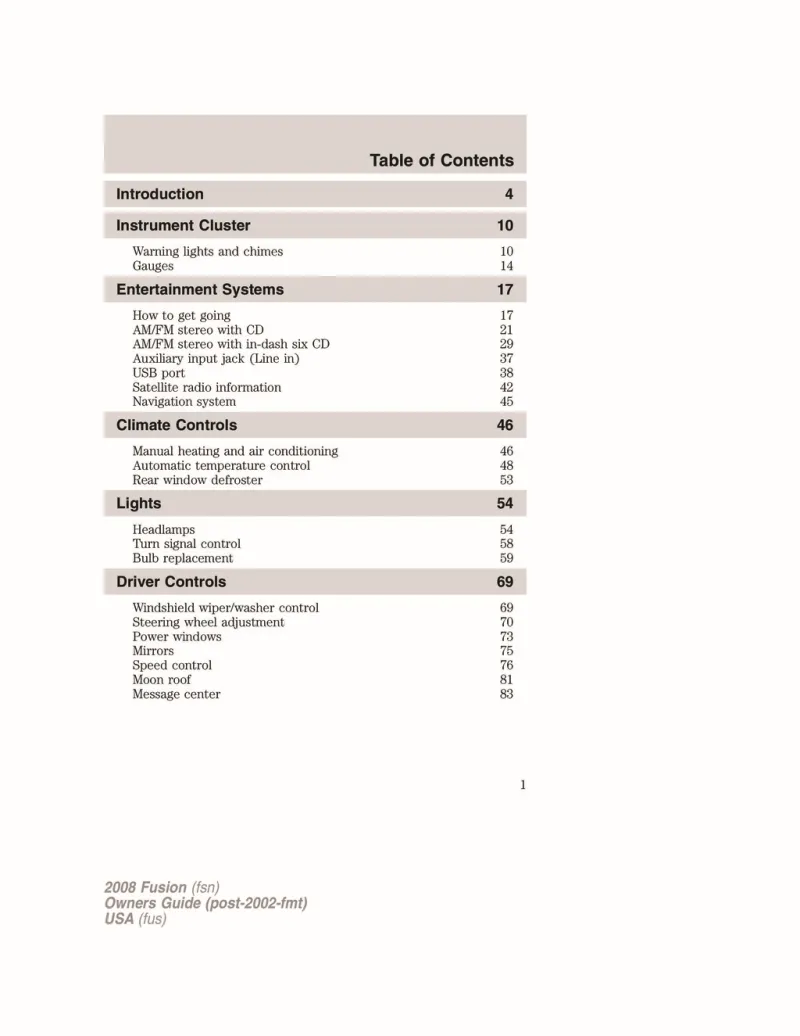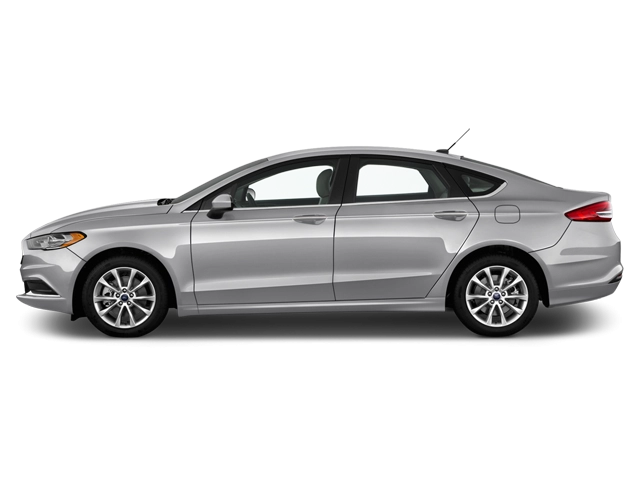2008 Ford Fusion Owner's Manual

Table of Contents
2008 Ford Fusion Overview
Introduction
The 2008 Ford Fusion stands as a solid contender in the midsize sedan market, blending sleek design with practicality and performance. With its distinctively bold exterior and comfortable interior, the Fusion appeals to a wide range of drivers, from those seeking an economical daily commute to individuals who appreciate a sportier driving experience. Offering various trims and a variety of powertrains, the 2008 Fusion strikes a balance between style, comfort, and performance.
Powertrains
The 2008 Ford Fusion offers several powertrain options to cater to different driving needs. The base model features a 2.3-liter four-cylinder engine that produces 160 horsepower and is paired with either a five-speed manual or an optional five-speed automatic transmission. For those seeking added power, a 3.0-liter V6 engine is available, boasting 221 horsepower and responsive acceleration. This upgraded engine can also be paired with an all-wheel drive system, enhancing grip and stability on varying road conditions, making the Fusion a versatile choice for a diverse range of driving environments.
Trims
The 2008 Ford Fusion is offered in three primary trims: S, SE, and SEL. The base S trim comes well-equipped with essential features such as air conditioning, full power accessories, and a four-speaker sound system. Moving up to the SE adds amenities like alloy wheels, upgraded audio, and a six-disc CD changer. The top-tier SEL trim boasts luxurious upgrades including leather upholstery, heated front seats, a premium sound system, and more advanced technology features, elevating the Fusion to a more sophisticated level.
Features
The 2008 Fusion prioritizes comfort and technology, with features designed to enhance the driving experience. These include available Bluetooth connectivity, satellite radio, and a navigation system in the higher trims. Safety is also a focus, with standard features like front and side airbags, anti-lock brakes, and stability control, ensuring peace of mind for the driver and passengers alike.
Owner's Manual
The 2008 Ford Fusion owner's manual provides essential information for maintaining the vehicle and maximizing its features. It includes detailed breakdowns of the car's specifications, maintenance schedules, and troubleshooting tips, ensuring that owners can keep their Fusion in optimal condition for years to come. From understanding dashboard indicators to guidance on vehicle care, the manual serves as a crucial resource for a hassle-free ownership experience.
User manual download
The Ford Fusion owner manual for the 2008 model year is to be found in PDF downloadable format on this page. The owner manual for the model year 2008 is free and in English, but the repair manuals are usually not easy to get and may cost more.
Manual Questions
Fill the form below and someone will help you!

